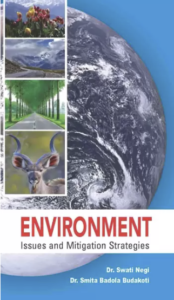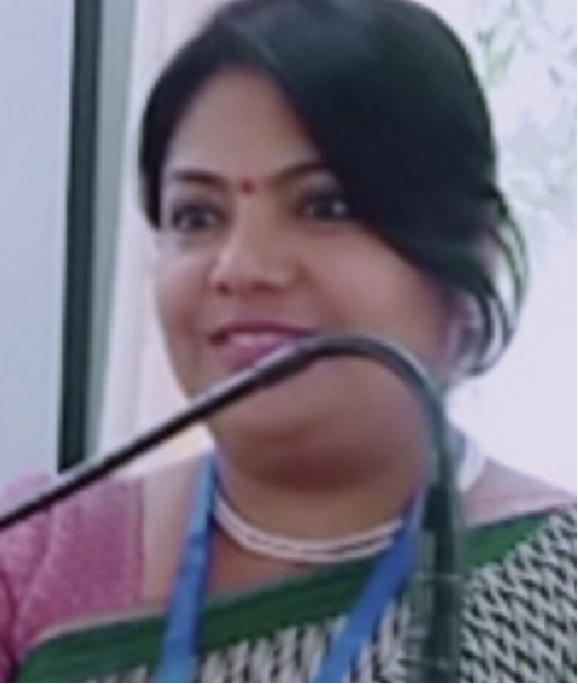Table of Contents
Toggle
When it comes to the environment, mitigation refers to the methods or policies used to lessen or stop pollution emissions or the damaging effects of human activity on the environment. Here is an illustration of environmental mitigation in action.
When it comes to the environment, mitigation refers to the methods or policies used to lessen or stop pollution emissions or the damaging effects of human activity on the environment. Here is an illustration of environmental mitigation in action.
Nations, societies and communities are built when growth is sustainable – where each individual, irrespective of their gender, age, race, beliefs or orientation has access to socio economic opportunities to learn and progress, with respect and dignity, and while ensuring physical and mental well being of self and of the surroundings in which they live. This may seem like a tall order, but it isn’t a new idea. For centuries, people from diverse segments have been a part of artisan environment.
All the hallmarks of progressive nation, encourage and support sustainable development with a more holistic approach to make active choices in the environment around so as to give a wholesome to the future generations. This includes organizational efforts of old and new alike and represents myriad sectors of ecosystems but have one thing in common, and that is the mission to create a balanced environment with inclusion of all biological components and support extended to all societal forces.
Nations, societies and communities are built when growth is sustainable – where each individual, irrespective of their gender, age, race, beliefs or orientation has access to socio economic opportunities to learn and progress, with respect and dignity, and while ensuring physical and mental well being of self and of the surroundings in which they live. This may seem like a tall order, but it isn’t a new idea. For centuries, people from diverse segments have been a part of artisan environment.
All the hallmarks of progressive nation, encourage and support sustainable development with a more holistic approach to make active choices in the environment around so as to give a wholesome to the future generations. This includes organizational efforts of old and new alike and represents myriad sectors of ecosystems but have one thing in common, and that is the mission to create a balanced environment with inclusion of all biological components and support extended to all societal forces.
Building and strengthening of environment hinges on beliefs that translates into behaviours and effective policies across all levels to encourage mitigation strategies to be adopted for development of environment in most sustainable manner. This needs strong commitment at leadership level which need to play out strongly, backed by action and real outcomes. Our programmes and policies should be so structured that hey support, enable and empower the associated masses to overcome the challenges and unlock opportunities at every stage in their personal, social and professional life.
This will indeed create a mental set-up which is inclined towards adopting ways and means for sustainable development and conservation of biodiversity. Environment awareness coupled with the right attitude is a must for tackling environmental issues which needs to be generated with the help of environmental education.
This book focusses on the use of traditional methods and ethics for sustainable development. Equity and inclusion also play a vital role in the mitigation strategies. Hence, research paper and review articles have been included which highlight the participation and the role of women in developing environment awareness. Also, the impact of new strategies being adopted for enhancing conservation of natural resources have been included generously. As a part of a new sustainable development strategy, the United Nations approved the 2030 Agenda, which contains the Sustainable Development Goals, SDGs a call to action to promote the global well-being of people and the environment which has been discussed in detail.
Building and strengthening of environment hinges on beliefs that translates into behaviours and effective policies across all levels to encourage mitigation strategies to be adopted for development of environment in most sustainable manner. This needs strong commitment at leadership level which need to play out strongly, backed by action and real outcomes. Our programmes and policies should be so structured that hey support, enable and empower the associated masses to overcome the challenges and unlock opportunities at every stage in their personal, social and professional life.
This will indeed create a mental set-up which is inclined towards adopting ways and means for sustainable development and conservation of biodiversity. Environment awareness coupled with the right attitude is a must for tackling environmental issues which needs to be generated with the help of environmental education.
This book focusses on the use of traditional methods and ethics for sustainable development. Equity and inclusion also play a vital role in the mitigation strategies. Hence, research paper and review articles have been included which highlight the participation and the role of women in developing environment awareness. Also, the impact of new strategies being adopted for enhancing conservation of natural resources have been included generously. As a part of a new sustainable development strategy, the United Nations approved the 2030 Agenda, which contains the Sustainable Development Goals, SDGs a call to action to promote the global well-being of people and the environment which has been discussed in detail.
The pandemic has taught us to realign, adapt and reinforce to make most of the ongoing situation. In the year gone by, the developers and educators have adapted modifications and advanced tremendously in terms of digital upgradation. One of the papers discusses the role of elearning in educational sector. There is a new generation of models which concentrates on the surroundings of current habitat to reduce uncertain biodiversity destructions.
In this critical time, to improve the understanding of the vulnerability anthropogenic activities on biodiversity and climate change, few chapters have been included which focuses on the types of biodiversity and methods for environmental conservation. So far, the present book reviews that, there is decline in powers causing instability of natural resources which is the drawback of the over-usage and climatic changes.
It also consults to all conservation of biodiversity to be our prime duty for making the future. Finally, the natural resources of the earth namely the air, water, land which includes the flora and fauna. Moreover, the representative samples of natural ecosystems must be safeguarded for the benefit of present and future generations through careful planning and appropriate management.
The pandemic has taught us to realign, adapt and reinforce to make most of the ongoing situation. In the year gone by, the developers and educators have adapted modifications and advanced tremendously in terms of digital upgradation. One of the papers discusses the role of elearning in educational sector. There is a new generation of models which concentrates on the surroundings of current habitat to reduce uncertain biodiversity destructions.
In this critical time, to improve the understanding of the vulnerability anthropogenic activities on biodiversity and climate change, few chapters have been included which focuses on the types of biodiversity and methods for environmental conservation. So far, the present book reviews that, there is decline in powers causing instability of natural resources which is the drawback of the over-usage and climatic changes.
It also consults to all conservation of biodiversity to be our prime duty for making the future. Finally, the natural resources of the earth namely the air, water, land which includes the flora and fauna. Moreover, the representative samples of natural ecosystems must be safeguarded for the benefit of present and future generations through careful planning and appropriate management.

Author: Dr. Swati Negi and Dr. Smita Badola Budakoti
ISBN: 9788195439805
Date of Publication: 2021
Format: Hard Cover


Dr. Swati Negi
Dr. Swati Negi is a versatile author, authentic writer and distinguished scholar born in Tehri Garhwal district situated in the mid-Himalayan range. She has successfully gained two post-graduate degrees, one in M.Sc. Chemistry with agrochemicals as a specialization
from prestigious Delhi University and also M.Ed. degree from HNB Garhwal Central University.


Dr. Smita Badola Budakoti
Dr. Smita Badola Budakoti is working as an Associate Professor at the Department of Zoology, Dr. PDBH Government PG College, Kotdwara. She has been teaching Fish Biology, Ecology, Molecular Biology and Biotechnology to both Undergraduate and Post Graduate level students for the last 18 years.
